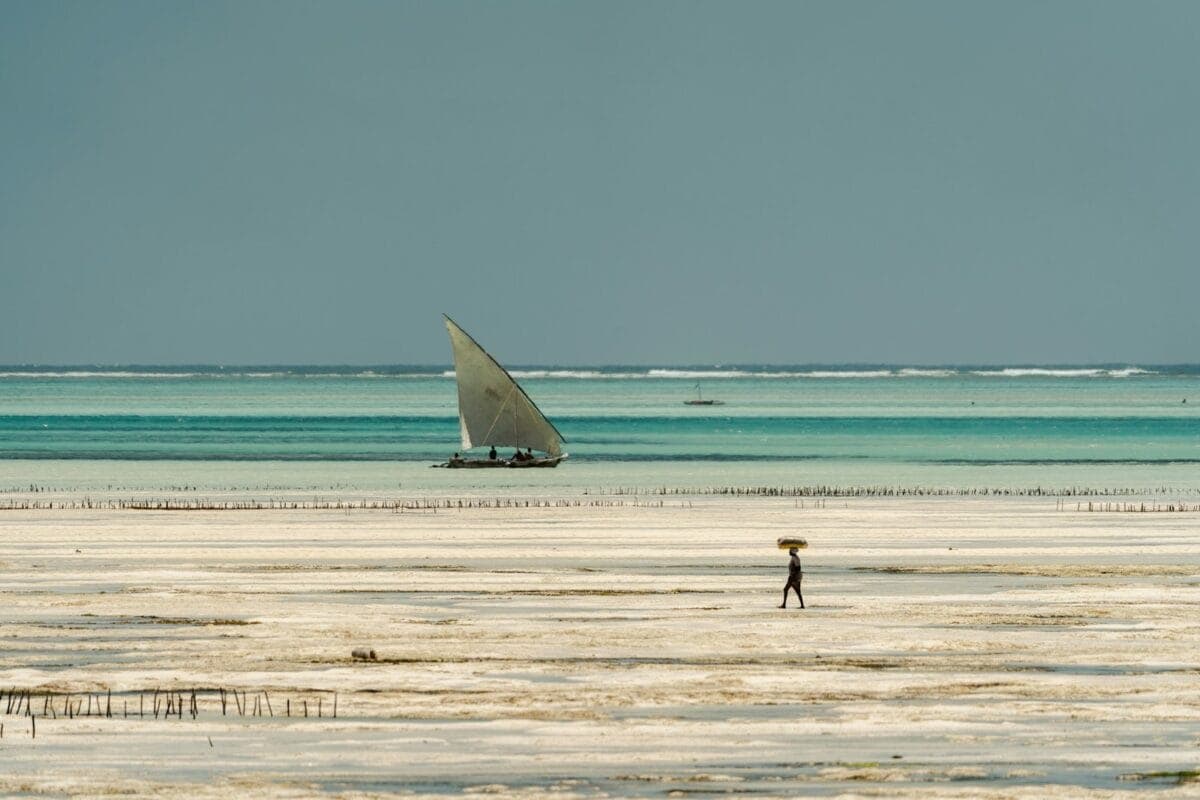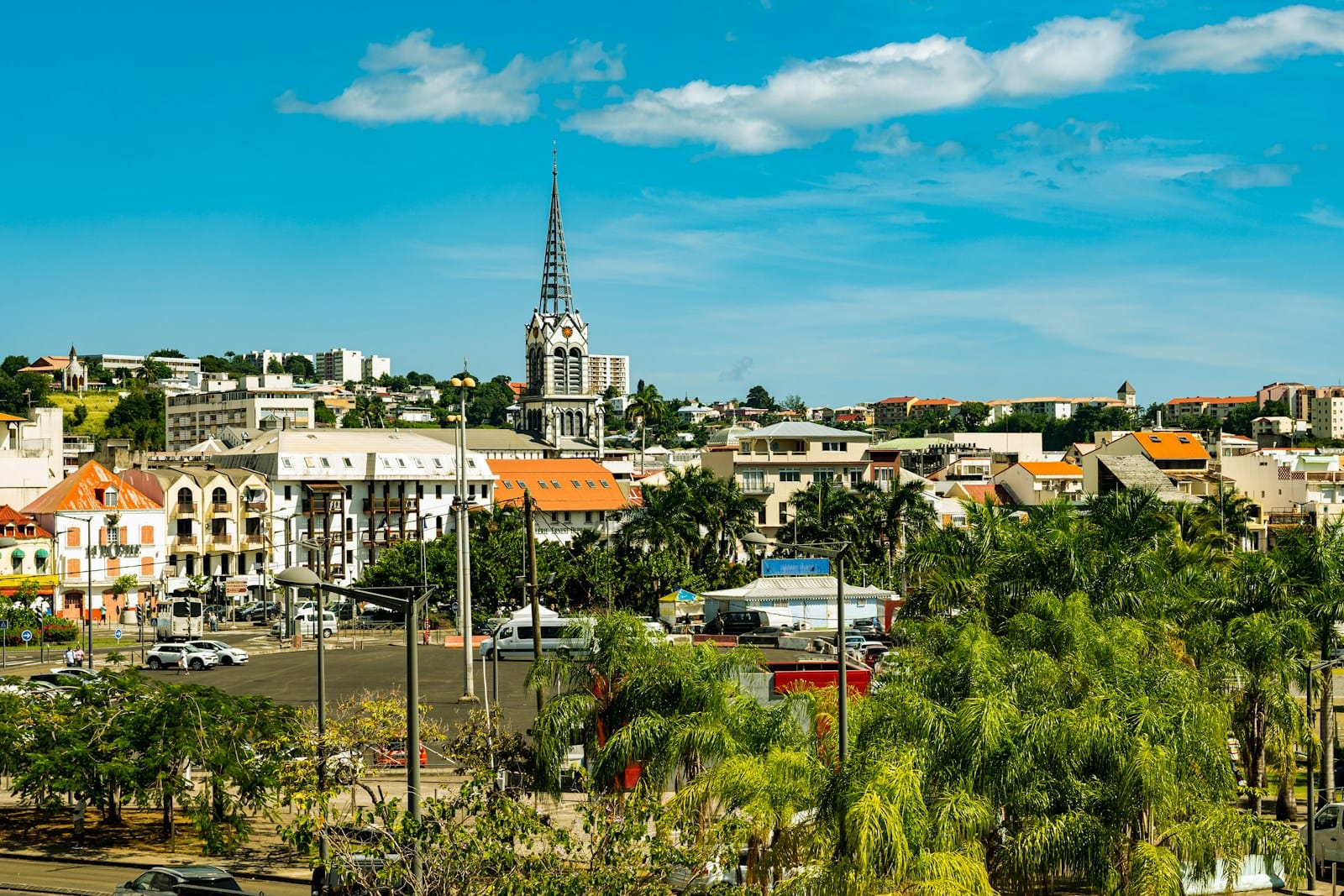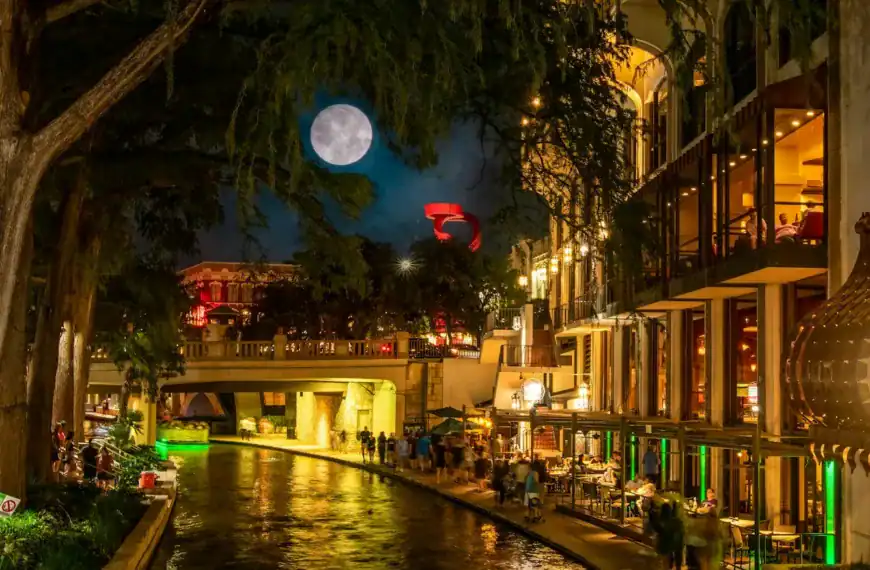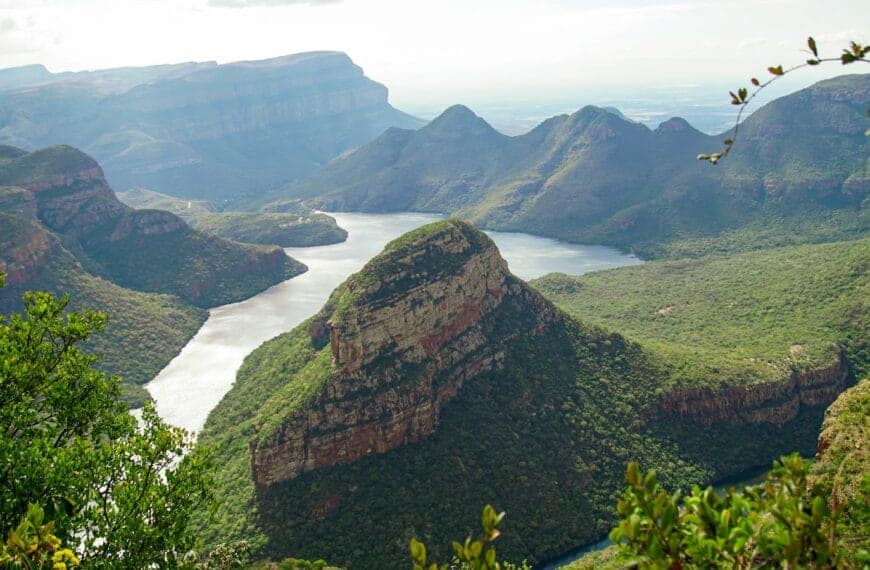East Africa Travel Guide: Safari Dreams, Great Lakes & Island Magic
Intro to East Africa Travel Guide
East Africa is a region where natural wonders and cultural depth collide — think endless savannahs, towering volcanoes, ancient Swahili ports, and idyllic Indian Ocean islands. Whether you’re tracking lions in the Serengeti or diving off the coast of Zanzibar, East Africa delivers travel experiences that are raw, rich, and unforgettable.
Start planning your journey with this complete East Africa Travel Guide — covering the best time to visit, travel cost tips, and the most rewarding places for nature, history, and coastal escapes.
Countries to Explore in East Africa
Burundi | Comoros | Djibouti | Ethiopia | Kenya | Mauritius | Rwanda | Seychelles | Tanzania | Uganda
💡Quick Facts:
Destination: East Africa
Continent: Africa
Country: Multiple (Regional grouping)
Administrative Division: N/A (East African Community – EAC bloc)
City: N/A (Major cities include Nairobi, Addis Ababa, Kampala, Dar es Salaam, Kigali)
Area: ~2,900,000 km² (1,119,000 mi²) — Approximate regional total
Population: ~490 million (2024 est.)
Density: ~169 people/km² (varies by country)
Capital: N/A — Regional (Major capitals: Nairobi, Addis Ababa, Kampala, Kigali, Dodoma)
Regions/Subregions:
• Kenya
• Tanzania
• Uganda
• Rwanda
• Burundi
• Ethiopia
• South Sudan
• Somalia
Official & Regional Languages: Swahili, English, French, Amharic, Somali, Arabic, Kinyarwanda, Kirundi (varies by country)
Currency: Kenyan Shilling (KES), Tanzanian Shilling (TZS), Ugandan Shilling (UGX), Rwandan Franc (RWF), Burundian Franc (BIF), Ethiopian Birr (ETB), South Sudanese Pound (SSP), Somali Shilling (SOS)
Time Zone(s): GMT+3
Airports: Nairobi Jomo Kenyatta (NBO), Addis Ababa Bole (ADD), Entebbe (EBB), Julius Nyerere (DAR), Kigali International (KGL), Juba International (JUB), Aden Adde International (MGQ)
Climate: Equatorial, tropical savanna, highland — seasonal rains (long & short)
Known For: Great Migration, Mount Kilimanjaro, Serengeti, Maasai Mara, gorilla trekking, Rift Valley lakes, historic coastal cities
🛂Arrival Info:
• EAC countries offer visa-free or visa-on-arrival for member states
• Kenya, Rwanda, and Uganda offer an East Africa Tourist Visa (90 days)
• Ethiopia and Tanzania require country-specific e-Visas
• Somalia and South Sudan: Pre-arranged visas required
• Official Visa Portals: Kenya eCitizen, Rwanda Immigration, Tanzania eVisa Portal, Ethiopia eVisa, South Sudan Immigration
• Customs Info: Country-specific customs authorities
💉Health Info:
• Required Vaccines: Yellow Fever (mandatory in many), Hepatitis A & B, Typhoid, Meningitis
• Malaria risk: High — prophylaxis essential
• Cholera outbreaks possible in rural zones
• Major hospitals in capitals and large cities; limited rural healthcare
• Medical evacuation insurance strongly recommended
• Ebola monitoring in bordering regions with DRC (low current risk)
✅ Check travel insurance options for travel emergencies, delays, and medical needs abroad — Get coverage here
✅ Stay Informed with Official Updates: WHO – International Travel & Health | CDC – Travel health updates
🚨Travel Advisory:
• Varies by country: Kenya, Rwanda, Uganda generally safe with Level 2 advisories
• Tanzania: Level 2 — Exercise Increased Caution
• Somalia and parts of South Sudan: Level 4 — Do Not Travel
• Petty crime risks in urban centers (theft, scams)
• Regional instability possible in border areas (South Sudan, Somalia, Ethiopia)
• Emergency numbers inconsistent; reliable in urban areas only
✅ Stay Informed with Official Updates: US Travel Advisory | UK Foreign Travel Advice
📅Holidays:
• Independence Days: Varies by country (Kenya – Dec 12, Uganda – Oct 9, Tanzania – Dec 9)
• Genocide Memorial Day (Rwanda, April 7)
• Timkat (Ethiopia, January) — Epiphany festival
• Eid al-Fitr and Eid al-Adha (dates vary)
• Lake Victoria Festivals and cultural carnivals
💰Visitor Info:
• Currency exchange best done in banks or authorized forex bureaus
• Credit cards accepted in major hotels and urban centers; cash preferred elsewhere
• Tipping common: 10% in restaurants, for guides and porters
• Duty-free limits vary per country (standard 200 cigarettes, 2 liters alcohol)
• Average Daily Budget: Budget $60–100, Midrange $150–250, Luxury $400+
✈️Airports:
NBO – Nairobi Jomo Kenyatta: Primary regional hub
ADD – Addis Ababa Bole: Ethiopian Airlines’ hub; connections across Africa
DAR – Dar es Salaam / ZNZ – Zanzibar: Coastal Tanzania
KGL – Kigali / EBB – Entebbe: Central Africa access
SEZ – Seychelles / MRU – Mauritius / TNR – Madagascar: Indian Ocean islands
Good regional links via Kenya Airways, Ethiopian Airlines, RwandAir
✅ Delayed or canceled flight? Check if you’re eligible for compensation
🚍Transport:
• Matatus (Kenya), dala-dalas (Tanzania), boda-bodas (motorcycle taxis) in cities
• Intercity buses and shuttles are common; standards vary
• Railway networks: SGR in Kenya, standard lines in Ethiopia, Tanzania
• Domestic flights popular for safari circuits (Kenya, Tanzania, Uganda)
• Ride-hailing apps: Uber, Bolt in major cities
• Road travel safety varies; rural roads can be challenging
✅ Book reliable airport transfers and in-city rides in advance. Reserve your ride here
📶Connectivity:
• Local SIM cards from Safaricom (Kenya), MTN (Uganda, Rwanda), Vodacom (Tanzania), Ethio Telecom (Ethiopia)
• Reliable mobile coverage in urban areas; patchy in rural regions
• Wi-Fi available in hotels, cafes, and airports
• Roaming expensive; local SIM/eSIM recommended
✅ Stay connected abroad with affordable eSIM data packs. Get your eSIM here
📜Laws & Etiquette:
• Legal drinking age: 18
• Public displays of affection discouraged in rural areas
• LGBTQ+ status: Legal in Rwanda, restricted or criminalized in others (Kenya, Tanzania, Uganda)
• Dress conservatively in rural and religious sites
• Photography restrictions in government, military, and sensitive sites
🛡️Emergency Info:
• Emergency Numbers: Kenya (999), Tanzania (112), Uganda (999), Ethiopia (991) — inconsistent outside cities
• Embassies and consulates in capitals (Nairobi, Addis Ababa, Kampala, Dar es Salaam)
• Tourist police units present in Kenya, Rwanda, Tanzania’s main destinations
• Local traveler helplines vary per country; hotels can assist with emergency contacts
✅ Use embassy locator tools: Embassies Worldwide
🌦️Weather:
• Equatorial and tropical savanna climates; temperatures 20°C–30°C (68°F–86°F)
• Long rains: March–May; short rains: October–December
• Best time to visit: June–October (dry season)
• Coastal areas (Zanzibar, Mombasa) are hot and humid year-round
• Highland regions (Rwanda, Ethiopia) are cooler and less humid
✅ Stay prepared—check the weather forecast for your destination — Weather Forecast
East Africa by Country – Where to Go
Explore this region country by country to understand its diversity — from safari giants to off-the-grid gems.
Kenya
- Nairobi: Urban heart with museums, giraffe sanctuaries, and markets.
- Masai Mara: Famed for the Great Migration and Big Five safaris.
- Lamu: A car-free Swahili island with centuries-old coral stone houses.
- Mount Kenya: Trek to Africa’s second-highest peak.
Tanzania
- Serengeti: Legendary plains for lion spotting and game drives.
- Ngorongoro Crater: A lush caldera teeming with wildlife.
- Zanzibar: White-sand beaches, spice tours, and Stone Town’s Swahili heritage.
- Mount Kilimanjaro: Africa’s tallest mountain and the trek of a lifetime.
Uganda
- Bwindi Impenetrable Forest: Home to endangered mountain gorillas.
- Queen Elizabeth National Park: Known for tree-climbing lions.
- Jinja: Source of the Nile and adventure sports capital.
- Kampala: A bustling city blending tradition and modern energy.
Rwanda
- Volcanoes National Park: Gorilla trekking and forest hikes.
- Kigali: Clean, safe, and full of cultural depth.
- Lake Kivu: Serene lakeside towns perfect for relaxing after safari.
- Nyungwe Forest: Home to chimpanzees and canopy walks.
Ethiopia (Geopolitically in East Africa but culturally unique)
- Lalibela: Rock-hewn churches and Orthodox Christian heritage.
- Simien Mountains: Dramatic cliffs and endemic wildlife.
- Axum & Gondar: Ancient kingdoms and castles.
- Addis Ababa: Museums, markets, and jazz cafés.
Top Places to Visit in East Africa
These destinations showcase the most iconic places to visit in East Africa — from wildlife strongholds to cultural marvels.
Wildlife & Nature Escapes
- Masai Mara & Serengeti: Bucket-list safaris and wildebeest migrations.
- Bwindi & Volcanoes NP: Gorilla trekking in lush highlands.
- Ngorongoro Crater: One of the most biodiverse areas in Africa.
- Simien Mountains: High-altitude adventures with epic views.
Coastal & Island Gems
- Zanzibar: Swahili architecture, diving, and dhow sailing.
- Lamu: Slow-paced, historic, and charming.
- Lake Kivu: A freshwater escape in the heart of the Great Lakes.
- Mombasa & Diani Beach: Kenyan coastlines rich in coral and culture.
Cultural Capitals
- Addis Ababa: Birthplace of the African Union and gateway to Ethiopian history.
- Kigali: Stylish, safe, and surprising.
- Nairobi: Wildlife meets city hustle and international dining.
- Lalibela: A sacred pilgrimage town carved from rock.
How to Choose Where to Go in East Africa
With so much on offer, choose your East Africa itinerary based on travel goals and logistics.
- For Classic Safaris: Kenya + Tanzania combo for Big Five + Migration
- For Primates & Forests: Rwanda or Uganda (or both) for gorillas and chimps
- For History & Culture: Ethiopia offers ancient churches and mountain kingdoms
- For Islands & Relaxation: Zanzibar or Lamu after a land-based adventure
- Efficient Pairings: Serengeti + Zanzibar, Masai Mara + Lamu, Bwindi + Lake Bunyonyi
How to Get Around East Africa
Travel in East Africa varies by country — prepare for both air and land logistics.
- Domestic Flights: Useful in Kenya, Tanzania, Ethiopia
- Safari Transfers: Many are by 4×4 through private companies
- Public Buses: Affordable but time-consuming (best avoided for long routes)
- Trains: Kenya’s SGR between Nairobi and Mombasa is a standout
- Ferries & Boats: Available in Zanzibar, Lake Victoria, and Lake Kivu
- Border Crossings: EAC visa simplifies multi-country travel (Kenya, Uganda, Rwanda)
Travel Budget & Costs in East Africa
The travel cost in East Africa depends on your itinerary and comfort level.
- Budget: $50–80/day — public transport, local guesthouses, self-guided treks
- Mid-Range: $120–200/day — guided safaris, eco-lodges, domestic flights
- Luxury: $300–800/day — fly-in safaris, boutique camps, private tours
Sample Costs:
- Gorilla trekking permit (Rwanda): $1,500
- Serengeti park entry (24 hrs): ~$70
- Local meal in Nairobi: $4–8
- Zanzibar snorkeling tour: ~$30
- Budget hotel in Kigali: ~$35/night
Best Time to Visit East Africa
Timing varies by activity and region — but most of East Africa is travel-ready year-round.
- June–Oct: Dry season, best for safaris and mountain treks
- Jan–Feb: Great for gorillas, hiking, and short dry spells
- March–May: Green season (some rain), fewer crowds, best for budget
- July–Sept: Great Migration crossings in Kenya/Tanzania
- Whale Shark & Diving: Nov–Feb along the Tanzanian coast
The best time to visit East Africa depends on your goals — safaris, trekking, or beach escapes.
Must-See Experiences in East Africa
These top things to do in East Africa define the region’s wild, soulful appeal.
- Track mountain gorillas in Bwindi or Volcanoes National Park
- Watch the Great Migration in the Serengeti or Masai Mara
- Summit Mount Kilimanjaro or hike the Simien Mountains
- Sail a dhow into a Zanzibar sunset
- Walk across Lalibela’s medieval church complexes
- Sleep under the stars in a tented safari camp
- Taste fresh seafood on Lamu or Nungwi beach
- Visit genocide memorials and museums in Kigali
Experience the spirit of East Africa — from sacred temple rituals and highland treks to floating markets and lakeside food adventures.
Best Travel Itineraries in East Africa
Here are some sample routes to help build your trip based on time and interest.
10-Day Safari + Island Escape
Serengeti → Ngorongoro → Zanzibar
- Wildlife + culture + coast
7-Day Gorilla Trekking Adventure
Kigali → Volcanoes NP → Lake Kivu
- Ideal for primate lovers and short trips
2-Week East Africa Explorer
Nairobi → Masai Mara → Serengeti → Ngorongoro → Arusha → Zanzibar
- The iconic circuit for first-timers
Offbeat 12-Day Itinerary
Lalibela → Simien Mountains → Bahir Dar → Addis Ababa
- Deep culture and mountain scenery in Ethiopia
Local Cuisine & Culinary Experiences
East African food is hearty, regional, and increasingly cosmopolitan in major cities.
What to Try
- Ugali (Kenya, Tanzania): Maize porridge eaten with meat, beans, or greens
- Nyama Choma (Kenya): Chargrilled goat or beef, often shared socially
- Injera & Wat (Ethiopia): Spongy bread with richly spiced stews
- Tilapia from Lake Victoria: Grilled whole or served in stew
- Zanzibar Seafood & Spices: Coconut curry, fresh catch, and cloves
Foodie Tips
- Visit Forodhani Night Market in Stone Town
- Book a coffee ceremony experience in Ethiopia
- Sample street food in Kampala or Nairobi
- Eat lunch in a local kibanda or nyama choma joint
Travel Safety & Cultural Etiquette in East Africa
Stay safe and travel respectfully with these regional tips.
- Visas: Check EAC or single-country requirements
- Health: Yellow fever card may be required; malaria prophylaxis advised
- Dress Modestly: Especially in rural and Muslim-majority areas
- Common Scams: Fake guides, inflated taxi fares — always confirm in advance
- Etiquette: Greet elders, remove shoes in homes, ask before photographing people
Where to Go Next – Pair East Africa with These Destinations
Continue your African adventure or link your trip to nearby regions.
- Southern Africa: South Africa or Namibia for desert, wine, and safari contrast
- Indian Ocean: Combine with Mauritius or the Seychelles for resort downtime
- Egypt: Connect from Addis or Nairobi for pyramids and Nile cruises
- United Arab Emirates: Dubai is a major stopover hub from Nairobi or Addis
South Africa Travel Guide | Zanzibar Travel Guide | Egypt Travel Guide | UAE Travel Guide
Final Planning Checklist for East Africa
- Apply for visas in advance (consider East Africa Tourist Visa for Kenya, Uganda, Rwanda)
- Book gorilla permits and park entries early — limited availability
- Schedule domestic flights or safari transfers at least 4 weeks ahead
- Bring USD cash for permits, tips, and rural purchases
- Pack neutral clothing, sun protection, and rain layers
- Load offline maps, translation apps, and safari ID guides
- Get necessary vaccinations and travel insurance
- Respect local culture, avoid plastic bags, and support community tourism
Explore East Africa with confidence using our trusted tips, local insights, and region-by-region planning tools.
For more expert travel tips, practical strategies, and trusted tools — visit our Homepage and get inspired for your next trip.










